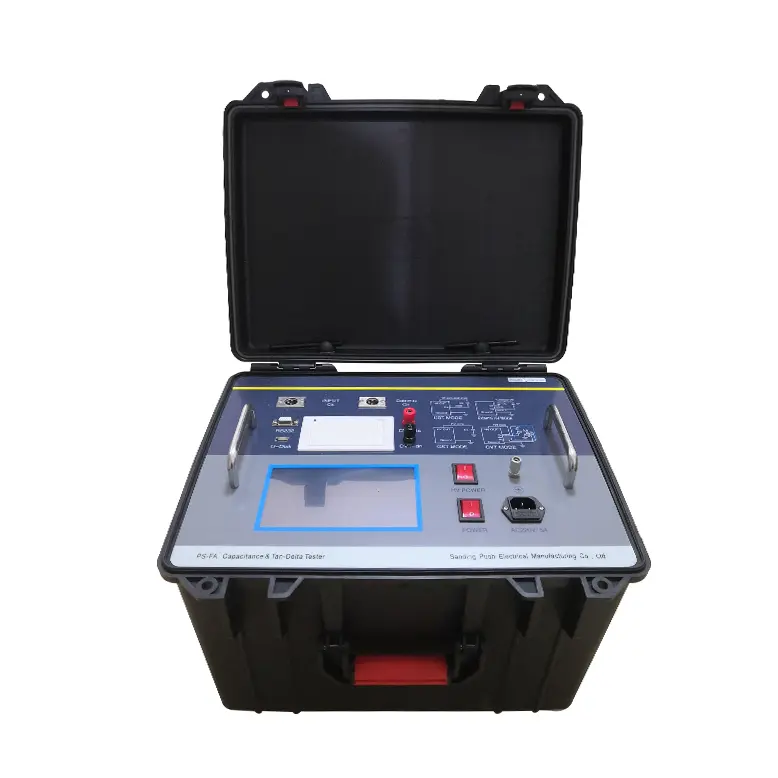adannaaollinsowenn
Member
- Se incorporó
- 13 Octubre 2023
- Mensajes
- 19
- Reaction score
- 0
- Puntos
- 6
- Edad
- 39
When using an SFR (Static Frequency Relay) tester, particularly in high-voltage or industrial environments, it's essential to adhere to strict safety precautions to protect personnel, equipment, and the integrity of the electrical system.
SFR (Static Frequency Relay) testers are valuable tools for identifying a range of common issues and faults in protective relays, helping to ensure the reliable operation of electrical systems. Here are some common issues and faults that SFR testers can help identify in protective relays:

Here are important safety guidelines to consider:
- Training and Qualifications:
- Ensure that personnel operating the SFR tester are well-trained and qualified for the task. They should understand the equipment, testing procedures, and safety protocols.
- Personal Protective Equipment (PPE):
- Wear appropriate PPE, including safety glasses, gloves, insulating footwear, arc-rated clothing, and face shields, as needed. The specific PPE required depends on the voltage and environment.
- Isolation and De-Energization:
- Before any testing, confirm that the equipment or system under test is de-energized and properly isolated from the power source. Follow lockout/tagout procedures to prevent accidental energization.
- Voltage Measurement:
- Use a voltage detector or multimeter to verify that the circuit or equipment is de-energized before starting any testing procedures.
- Safe Access and Working Conditions:
- Ensure that the testing area provides safe access and working conditions. Avoid overloading or overcrowding the testing environment, and maintain proper ventilation.
- Proper Grounding:
- Ensure that the SFR tester and all associated equipment are properly grounded to prevent electrical shock and ensure accurate measurements.
- Environmental Conditions:
- Consider environmental factors, such as moisture, temperature, and ambient electromagnetic interference (EMI). Ensure that the testing area is safe and adequately controlled.
- Emergency Response Plan:
- Have a well-defined emergency response plan in place in case of accidents or unexpected events. Ensure that all personnel know how to respond to various emergency scenarios.
- Qualified Supervisor:
- When conducting SFR testing, have a qualified supervisor or electrical engineer present who can make decisions related to safety and testing procedures.
- Compliance with Standards:
- Ensure that the testing process adheres to industry standards and regulations specific to the equipment or protection systems being tested.
- Instrument Calibration:
- Regularly calibrate the SFR tester to maintain accurate measurements. sfr tester Follow the manufacturer's recommendations for calibration intervals and procedures.
- Avoid Contact with Energized Parts: Never touch or come into contact with energized electrical components or conductors while conducting tests. Use appropriate insulating tools and equipment when necessary.
- Maintain Proper Test Connections: Ensure that all connections and leads are correctly attached and secure. Incorrect connections can lead to inaccurate results or safety hazards.
- Proper Discharge of Energy: If energy storage elements are present in the system under test, ensure that they are properly discharged and safe before conducting tests.
- Record Keeping: Maintain detailed records of the test procedure, measurements, and any abnormalities observed during testing.
What are the common issues and faults that SFR testers can help identify in protective relays?
SFR (Static Frequency Relay) testers are valuable tools for identifying a range of common issues and faults in protective relays, helping to ensure the reliable operation of electrical systems. Here are some common issues and faults that SFR testers can help identify in protective relays:
- Frequency Deviation: SFR testers can detect frequency deviations from the nominal frequency, which may indicate issues with the power source or load imbalances.
- Frequency Loss: They can identify complete frequency loss, which is a critical fault that can disrupt the operation of protective relays and power systems.
- Over-Frequency: SFR testers can detect over-frequency conditions, which can lead to overvoltage and potential equipment damage.
- Under-Frequency: They can identify under-frequency conditions, which may result from load shedding or generation tripping, potentially impacting system stability.
- Frequency Oscillations: Oscillations in frequency can be detected, indicating instability or other system issues.
- Frequency Restoration Time: SFR testers can assess the time it takes for the system to return to the nominal frequency after a disturbance.
- Voltage Instability: Frequency changes may correlate with voltage instability, which can be identified using SFR testers.
- Loss of Voltage: The sudden loss of voltage, which can trigger protective relays, is a condition that SFR testers can help detect.
- Voltage Restoration Time: SFR testers can assess how quickly voltage is restored after a fault or disturbance.
- Protection Relay Operation: SFR testers can verify the proper operation of protective relays, ensuring they respond correctly to frequency-related faults and disturbances.
- Setting Verification: SFR testers can be used to confirm that the settings and thresholds of protective relays are accurate and in line with system requirements.
- Fault Location: By analyzing the frequency response of protective relays, SFR testers can assist in pinpointing the location of faults within the electrical system.
- System Resilience: SFR testers can help assess how well protective relays and the overall system can withstand frequency-related disturbances and recover quickly.
- Testing and Calibration: SFR testers are essential for testing and calibrating protective relays to ensure they respond accurately to frequency variations and protect the system as intended.
- Communications Testing: SFR testers can assess the communication links between protective relays, control systems, and monitoring equipment to ensure reliable data exchange during frequency-related events.






